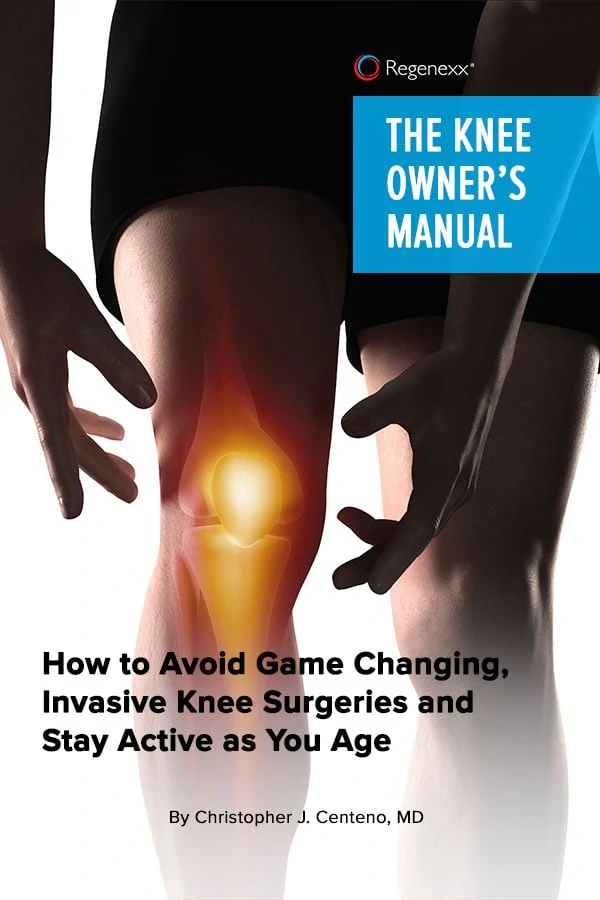Knee stability, and stability in general, is very important. Lack of knee stability can lead to more problems over time, such as pain and arthritis. What would cause you to suspect you have knee instability? You may notice your knee joint cracking or popping, or you might experience a sudden shift in the joint with a particular movement. Or you could already have some pain or swelling in the knee joint.
There are also 4 simple tests you can perform at home to check your knee for instability. If you suspect you have knee instability after performing these tests, you should follow up with your regenerative medicine physician for further evaluation.
The 4 Simple Stability Tests
Because knee instability can stem from issues in other areas, such as the spine or ankle, our 4 simple stability tests will evaluate these areas as well. These tests should help pinpoint whether instability is primarily an issue in the knee or whether it may be rooted in the spine.
Caution! If you injure easily, please do not perform these tests. If your stability is more fragile, the tests could exacerbate your condition or cause more injury. If you experience significant pain at any point, stop the test immediately. You are performing these tests at your own risk. Please seek treatment if you experience pain during testing or if you the tests reveal instability.
You may need someone to assist. You will also need a firm pillow and a timer (you should have one available on your smartphone).
Single-Leg Deep Knee Bend
What does this test do? Knee stability and hip stability
Stand straight, and on the side, you wish to test, balance on one foot (bending the opposite leg at the knee as shown in the image above). While balancing on that single leg, do a single-leg squat, keeping your body as straight as possible.
Pass: You balance so that your knee stays straight and in line with your hip for about half of the squat and as you return back up.
Fail: Your body tilts to the side, your knee drives inward, or you can’t perform the half-squat.
Single-Leg Balance
What does this test do? Knee stability, hip stability, and ankle stability
Balance on one leg and count to 10 while watching your ankle. Make sure your body is straight and your hands are at your sides.
Pass: The ankle remains balanced and rock-solid throughout the test.
Fail: The ankle rolls. The ankle moves back and forth.
Lower Back Test 1: 90-Degree Sit-Up
What does this test do? Spine stability (the lower back)
Lie faceup on the floor. Lift your knees, bringing your knees and hips to a 90-degree angle (as shown in the image above) and keeping your neck flexed. Start your timer and hold this position as long as you can. Write down your timed score.
Caution! If you experience significant *pain with this test, stop immediately and discuss with your regenerative medicine physician as this could be a sign of a disc or nerve issue!
Pass: Standard time scores for men are 182 seconds (3 minutes). Standard time scores for women are 85 seconds (1.5 minutes).
Fail: If your timed score is significantly lower than the standard scores, you may have spine stability issues.
Lower Back Test 2: Back Extension
What does this test do? Spine stability (low-back extensors)
Lie facedown on the floor. Place a firm pillow (make sure it is firm enough to support you) under your stomach, and position your arms and hands along your sides. Extend your back, lifting your chest off of the floor (as shown in the image above). Keep your neck flexed. Start your timer, and hold this position as long as you can.
Caution! If you experience significant *pain with this test, stop immediately and discuss with your regenerative medicine physician as this could be a sign of facet joint issues or lumbar stenosis.
Pass: Standard time scores for men are 208 seconds (3.5 minutes). Standard time scores for women are 124 seconds (2 minutes).
Fail: If your timed score is significantly lower than the standard scores, you may have spine stability issues.
Both of the stability tests for the lower back were pioneered by a Japanese researcher.
Knee Instability: What Does It Mean if I Failed a Test?
If you failed one or more tests, your poor stability in that area could be due to a number of issues (e.g., muscle weakness or pain, irritated nerves, etc). Physical therapy may be an option, but if this doesn’t fully address the problem, working with your regenerative medicine physician can help you address stability issues before they get worse.
If you are already a patient, as you are working with your physician toward your stability goals, you can use these 4 simple tests monthly to gauge your progress. Click here for our worksheet that includes these stability tests and more.
Addressing your knee instability sooner rather than later is imperative to avoiding worse issues over time, such as arthritis. If you want to learn more about instability and how it impacts your whole body, read the “Stability” chapter in Dr. Centeno’s book Orthopedics 2.0.

